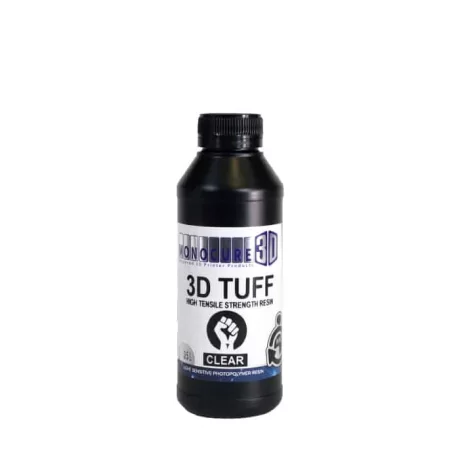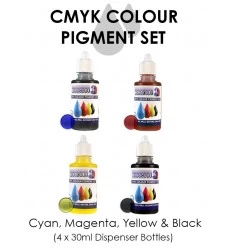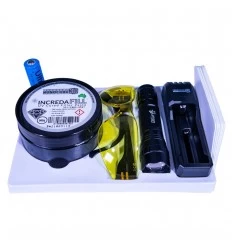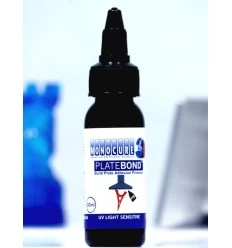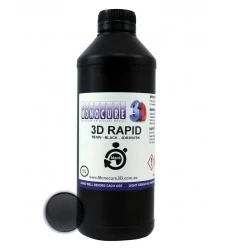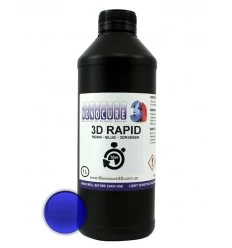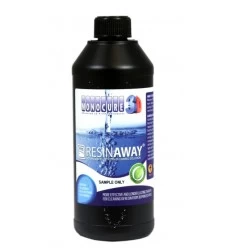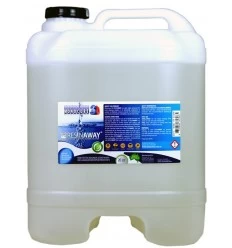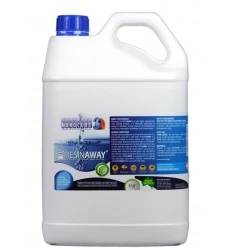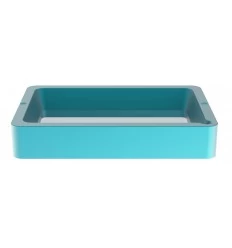Ingen varer
Priserne er inklusiv moms
Varen er nu lagt i din kurv
Der er 0 varer i din kurv Der er 1 vare i din kurv
Monocure 3D TUFF™ resin er en unik blanding af avancerede urethaner, der er specielt designet til at producere en del, der har høj trækstyrke. Disse mekaniske egenskaber giver den rette balance mellem styrke, fleksibilitet og en hård overfladefinish.
Ikke på lager
25489
Skriv din e-mail-adresse her, hvis du vil have besked når vi igen har denne vare på lager:
Jeg ønsker en e-mail når varen kommer på lager
What is TUFF?
Monocure 3D TUFF™ resin is a unique blend of advanced urethanes specifically designed to produce a part that possesses high tensile strength. These mechanical properties provide a right balance of strength, flexibility and a hard surface finish.
Use M3D TUFF™ if you intend to 3D print robust engineering prototypes; it was designed to withstand high stress and strain. Once fully post-cured, TUFF™ can also be machined, painted or polished for further finishing (see below for more details).
Our development team have created this unique material to remain rigid and hard, yet withstand high tensile pressure. The strength improves with the increased thickness of the printed part. For more delicate, thinner models, it is recommended to add FLEX100™ to increase the flexibility if required.
Impact and tensile Strength - What is the difference?
To test the durability of a material when it is dropped or hit with a sudden force is done by performing an Impact Strength Test. It is essential to understand that this is very different from a Tensile Strength Test.
In an impact resistance test, the material is subjected to a force suddenly without any warning. When measuring the Tensile strength of a material, the pressure is applied to it gradually. Failure for both phenomena happens through entirely different mechanisms. In tensile testing, stress exceeds fracture/ultimate value, and in impact testing, the energy transferred is too much for the material to handle.
If you require a high impact resistant parts, you can mix our TUFF™ resin with our FLEX100™ resin to increase the impact resistance properties as needed. We will be launching premixed TUFF/FLEX100™ resin in our PRO range which is coming soon.
Ok, so where are the official strength test facts and figures?
TUFF™ Printing Tips - How do I use this resin?
M3D TUFF™ resin is very versatile and can be between 10 micron and 100 micron layer heights. 3D models should always be designed solid without any hollowing. Always print large flat areas on an angle to help with print deformation due to the adhesion to the FEP film. To help with unsupported areas, ensure you use well-positioned, solid supports. We recommend you add 1-2 seconds’ wait after print’ setting to allow the material to cool after curing before starting to lift the build plate. (Not all slicers have this setting, check with your software provider) This resin will print faster than our rapid model resin, please adjust your settings accordingly. Use a calibration model like this one, to dial in your printer with our resin. Check our printer setting page to see if we have your printer listed to give you a good starting point.
Finishing - What's the best practice?For best results after printing, use ResinAway® for removing uncured resin from the part. Place part in a pre-wash bath filled with ResinAway® and use a soft brush to remove excess resin. Follow by placing the component into an ultrasonic cleaner with ResinAway® for 3-5mins to help remove the resin trapped in the finer detail.
Ensure parts are dry by using compressed air or patting gently with a lint-free cloth before post-curing – Warning: leaving excess IPA or ResinAway® on parts might result in surface cracking.
TUFF™ requires post-curing to reach its optimal mechanical properties. We recommend using a 405nm LED Ultraviolet light to post-cure the model. It is recommended to post-cure for at least 30 mins to improve the tensile strength of the resin, but up to 2 hours will further enhance the mechanical properties. These properties will also increase over a few days.
When exposing a part to external elements, apply paint to the surface to improve longevity. Alternatively, the components can be machined, sanded and polished to create a tough scratch resistant surface.
| Mærke | Monocure 3D |
| Farve | Klar |
PHYSICAL PROPERTIES
|
Product Code(s)
|
3DT-3878C
|
|
Colour(s)
|
Clear appearance
|
|
Viscosity
|
200 - 300 cps @ 25°C (Brookfield RVT)
|
|
Odour
|
Negligible Characteristic
|
|
Active Solids
|
100%
|
|
Shelf Life
|
24 months
|
|
UV Cure
|
225nm to 420nm
|
|
Layer Height
|
10um – 100um
|
|
Cure Speed
|
Fast with UV LED
|
|
Storage
|
Dark Cool, Dry place out of direct sunlight
|
|
Wash Up
|
RESINAWAY® or IPA (Isopropyl Alcohol)
|
APPLICATION
Before every use, mix the resin well by shaking the bottle vigorously for one minute (larger containers will require shaking for longer). Models should always be designed solid without any hollowing. To help with unsupported areas, ensure you use well-positioned, solid supports. Carefully pour the resin into the printers vat, ensure that there is no sunlight or any artificial UV light in the room as it may cause the resin to cure. Follow the printer manufactures instructions on how to use the printer; you can check our website for help with the printer settings. We recommended you print simple, low height models when dialling in your 3D printer and resin settings. After the model has finished printing, for best results, clean off excess resin with RESINAWAY®. Return the unused resin into the bottle using a fine paper/mesh filter. Please store the bottle in a dark, cool & dry place away from direct sunlight. TUFF™ requires post-curing to reach its optimal mechanical properties. We recommend using a 405nm LED Ultra-Violet light to post-cure the model. It is recommended to post-cure for at least 30mins to improve the tensile strength of the resin, but up to 2 hours will further enhance the mechanical properties.


